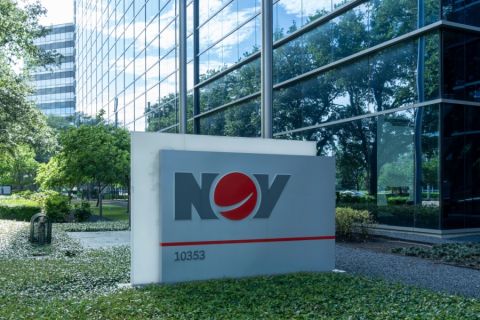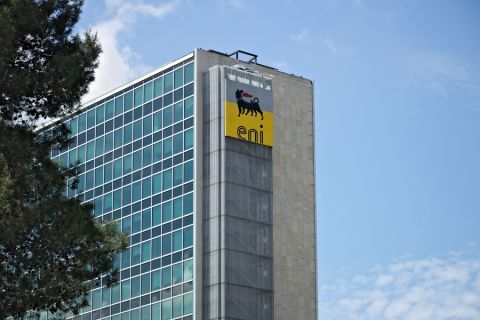With an estimated 90 Bbbl of oil, 1,669 Tcf of natural gas, and 44 Bbbl of NGL that may remain undiscovered in the Arctic, it's no wonder companies are getting fired up about this chilly region.
Said to hold about 22% of the world's undiscovered conventional oil and natural gas resources, according to the US Geological Survey, the Arctic continental shelf may be the largest unexplored area for petroleum left in the world. Already, more than 400 oil and gas fields have been discovered north of the Arctic Circle, mostly onshore. However, colossal finds remain hidden amid an area of more than 7 million sq km (3 million sq miles) in less than 500 m (1,640 ft) water depth offshore.
And with eight countries having territory in the Arctic – Canada, Finland, Greenland, Iceland, Norway, Russia, Sweden, and the US – there is plenty of opportunity to get involved if companies have the money. The US also has plans to open additional acreage for oil and gas development in the National Petroleum Reserve in Alaska. The 22nd license round on the Norwegian Continental Shelf also will make more Arctic territory – including 72 blocks in the Barents Sea – available.
The Arctic region is not without its challenges. Among these is development of infrastructure, which has left some areas with known natural gas resources void of exploration. Moreover, limited transportation access could reduce options and increase costs. Equipment must be designed to endure extremely cold temperatures. Pack ice can damage offshore facilities and equipment. Then there are possible supply delays and courtroom challenges from environmentalists seeking to protect the area's fish and wildlife resources.
However, if past success stories hold any insight into what is possible, discoveries could be made like Alaska's Prudhoe Bay field, which has 13.6 Bbbl of recoverable oil, according to the US Energy Information Administration (EIA). Prudhoe is the largest oil field in North America.
A payoff of oil or gas depends on the location, according to a study on Arctic oil and natural gas potential by the EIA. The North American side of the Arctic could have about 65% of the Arctic's undiscovered oil; however, it could hold only 26% of the area's undiscovered natural gas. By contrast, the Eurasia side possibly holds about 63% of the total Arctic resource base, while North America could have only about 36%. Most of Eurasia's undiscovered Arctic resource is expected to be oil, at 74%.
"While the Arctic is rich in undiscovered oil and natural gas resources, the resources are concentrated in just a few sedimentary provinces," the study said. "The three largest Arctic provinces account for 65% of the total Arctic oil and natural gas resources, and the largest 10 oil and natural gas provinces account for 93% of the total."
Arctic Alaska could hold the largest undiscovered oil deposits, with about 30 Bbbl, the study said, while the Amerasia basin north of Canada likely has the second largest oil province with an estimated 9.7 Bbbl. The East Greenland Rift rounds out the list with the third largest estimated oil province with about 8.9 Bbbl.
Action in the Arctic

Workers climb stairs aboard the Aker Barents drilling rig in the Barents Sea.
The industry's big players are bringing out big bucks in hopes of making huge discoveries as climate change slowly warms the region.
With extensive experience in the Arctic, Statoil has plans to drill nine wells in 2013 as part of its Norwegian
Barents exploration campaign. The company pumped an additional US $30 million (NOK 170 million) into its Arctic research budget, bumping the budget to $44 million (NOK 250 million) for 2013.
"We believe that taking a stepwise approach is the key to our success. Our history is one of taking one step at a time, developing technology, competence, and experience," said Statoil's B?rd Glad Pedersen. "This approach we bring with us to the wider Arctic as well. Having operated in harsh environments for 40 years, we believe that we are well positioned to take on new challenges."
The company anticipated commencing drilling activity in December in Nunatak in the Skrugard area with hopes of completing four wells there in six months. Further drilling is set to take place in the Hoop frontier exploration area in the Barents in summer 2013. The company said these will be the northernmost wells ever drilled in Norway. The campaign will wrap in the Hammerfest basin near the existing Sn?hvit and Goliat discoveries.
A three-well campaign offshore Newfoundland, Canada, also is on tap.
"Through this, we hope to prove up new resources and discover resources that could lead to new development projects," Pedersen said.
In preparation for harsh Arctic conditions, Statoil delved into creating a tailor-made Arctic drill unit (currently in the concept phase). The company also researched properties and quantified characteristics of the drift of sea ice and icebergs and evaluated technology such as satellite sensors and laser scanners in northeast Greenland with the Norwegian University of Science and Technology during a cruise.
Although it was too early to evaluate the findings of the September cruise, Pederson pointed out that each area Statoil plans to drill in – including Canada/Newfoundland, the North American Arctic, and Greenland – presents obstacles.
"But the main challenge when operating in the Arctic is ice. This could mean icebergs floating by, thin first-year ice, or thicker multiyear ice," Pedersen said. "In some areas like the Beaufort Sea, the operational season is short due to the water freezing up. Short operational seasons and the logistics required drives costs, and this is something [we] have a strong focus on. With our step-by-step approach, we will only move to the more challenging areas when we know we can do it safely."
Safety is a top concern
Safety of the people and the environment remain keys to successful operations, with the Deepwater Horizon disaster still fresh on minds and the Exxon Valdez oil spill in 1989 as evidence of devastation in Arctic waters.
"It starts with prevention," Curtis Smith, a spokesman for Shell in Alaska, said to E&P earlier this year. "We are working in known areas that are relatively low-pressure and are extremely shallow compared to what you might typically see in the deepwater Gulf of Mexico [GoM]. We're treating them as the most complicated wells we have ever drilled."
Plans include use of BOPs to seal off wells, with capping stacks modeled after the one that stopped the blowout of the Macondo well in the GoM. "We have made it Arctic-ready, and we look forward, frankly, to never using it," Smith said.
Shell also has buried pipelines several meters below the seabed to avoid potential damage from floating ice. Detection systems also monitor any drop in pressure, activating valve systems to halt oil flow, according to the company's website. In addition, the company will have an onsite, near-shore, and onshore oilfield response system that is Arctic-built.
Shell set out to drill up to five wells total in the Chukchi and Beauforts seas in 2012 but had to scale down its drilling plans to two wells – one in each sea – due to sea ice as well as permitting and regulatory setbacks. Eventually, Shell gave up on plans to drill into potentially hydrocarbon-bearing zones in the Arctic this year because of the setbacks. Among these was a damaged containment dome for the Arctic Challenger containment barge. Without the barge, which would carry the containment dome capable of being lowered to a wellhead if a spill occurs, the federal government would not give the company the go-ahead to tap into potentially oil-bearing zones.
Certification of the barge was needed to trigger the final permits needed for the drilling program. That certification finally came Oct. 11, weeks after the window for drilling in the Chukchi Sea and just before the window closed for Beaufort Sea drilling.
"The ABS classification and recent Coast Guard certification of the Arctic Challenger containment barge is welcome news and means Shell will have the necessary assets in place to drill and evaluate hydrocarbon zones in 2013. Until then, we will continue to make the most of the time that remains in the 2012 open-water season by drilling top-hole sections on our prospects in the Chukchi and Beaufort seas," Pete Slaiby, vice president of Shell Alaska, said in a prepared statement.
Shell announced the end of its 2012 exploratory drilling programs in the Beaufort and Chukchi seas on Oct. 31, touting several weeks of safe and responsible Arctic drilling. "The work we accomplished in drilling the top portions of the Burger-A well in the Chukchi Sea and the Sivulliq well in the Beaufort Sea will go a long way in positioning Shell for another successful drilling program in 2013," the company said.
To drill or not to drill?
Not every oil and gas company is keen on drilling – specifically for oil – in the Arctic. Christophe de Margerie, CEO of Total, told the Financial Times this year that the risk of an oil spill was too high in such an environmentally sensitive area. Gas leaks are easier to cope with than oil spills, he said, noting he didn't oppose Arctic exploration in principle.
Yet oil is just what Statoil hopes to find in the North American Arctic. In response to Margerie's comments, Pedersen said Statoil's strategy stands firm. "We believe in the resource potential in the Arctic and that we can develop resources in the region in a safe and sustainable way," he said. "It is not without challenges, but taking a stepwise approach, we choose to develop competence, technology, and experience before we take the next step. The Arctic is a long-term play, and we will not rush into activities before we are ready."
Other companies with Arctic exploration programs include BP, ExxonMobil, and Rosneft.
Rosneft and ExxonMobil have partnered to form the Arctic Research Center for Offshore Developments. The center, announced in June, will provide services such as ice monitoring and management; design of ice-resistant offshore vessels, structures, and Arctic pipelines; logistics; and safety, according to ExxonMobil. The center also will feature a marine incident warning and prevention department that will work to prevent and respond to emergencies.
Recommended Reading
NOV Announces $1B Repurchase Program, Ups Dividend
2024-04-26 - NOV expects to increase its quarterly cash dividend on its common stock by 50% to $0.075 per share from $0.05 per share.
Repsol to Drop Marcellus Rig in June
2024-04-26 - Spain’s Repsol plans to drop its Marcellus Shale rig in June and reduce capex in the play due to the current U.S. gas price environment, CEO Josu Jon Imaz told analysts during a quarterly webcast.
US Drillers Cut Most Oil Rigs in a Week Since November
2024-04-26 - The number of oil rigs fell by five to 506 this week, while gas rigs fell by one to 105, their lowest since December 2021.
CNX, Appalachia Peers Defer Completions as NatGas Prices Languish
2024-04-25 - Henry Hub blues: CNX Resources and other Appalachia producers are slashing production and deferring well completions as natural gas spot prices hover near record lows.
Chevron’s Tengiz Oil Field Operations Start Up in Kazakhstan
2024-04-25 - The final phase of Chevron’s project will produce about 260,000 bbl/d.




